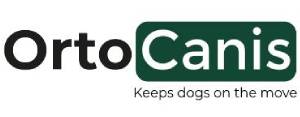The main goals of a canine massage are:
- Muscular relaxation
- Increased flexibility
- Increased blood flow
- Improved health and comfort
Safety:
We should start the massage next to the dog, so that they can always see us. Once the dog begins to trust us more we can stand behind the dog if they are on top of a table, however if we give the massage on the floor or on a mattress the best would be to continue sitting next to the dog. We should never force an animal to receive a massage, if it is not welcome from the start, or if they become uncomfortable during the massage we must stop. During the massage we should monitor the animal’s reaction at all times; it should take place somewhere quiet where the animal is comfortable, far from distractions and, most importantly, from other dogs; we should avoid objects or sounds that could distract their attention or upset them.
Contraindications:
- Never massage an open wound
- Never treat a dog in shock
- Do not give massages to dogs with fever
- Do not give massages to dogs with skin infections
Initial evaluation:
We should always use the gait to evaluate the dog, with a detailed inspection of their gait we can determine if there are deficits, the length of the stride, the body’s curvature, where the limbs are placed, harmony in the movement, movement of the head and of the tail. We should first observe the dog in its totality from far away, if we see any irregularity then we approach the dog and inspect a segment and compare it with the other side. We should pay special attention to the length of the stride and how the segment is placed on the ground.
Do we see any area with less mobility or that’s tenser?
Is there a limp in any of the limbs?
Does the dog’s spine move correctly when walking or turning?
Are the limbs placed equally on the ground?
Is the head carried a little lower than normal in order to support the weight on the front legs?
We can ask ourselves several of these questions in order to determine how to act and build the correct massage protocol for each case.
We must take into account the dog’s normal activity and what they are going to do or have done before or after the massage. We are not going to do the same during a break in a competition as at the end of it.
Starting the massage:
It is impossible to have one massage protocol established for all dogs, we must adapt to each animal and never force a technique that is not pleasant for the animal. If we are with the owner, their role is to control the animal, however, we must always control the dog’s reactions ourselves, interpret their reactions and adapt to their physical and mental state.
Position of the masseur:
First and foremost is the safety of the masseur, we should never place ourselves in front of a dog when massaging especially if it is dominant, as this could be interpreted as an aggression. We must always place ourselves next to the dog, we will start by letting the animal smell us and win over its trust, next we will place a hand on top of them but with hardly any movement, if the dog lets us we will continue stroking and then finally we will begin the massage.
Positioning the dog:
The dog can be on the floor or on top of a table, we can perform the massage lying down, sitting or standing.
Techniques for massaging the dog:
The most common techniques for massaging the dog are:
Superficial stroking “Effleurage”:
Using the hands, fingers or fingertips, it is very useful as an introductory technique. Light stroking is done on the dog’s skin always in the direction of the venous return. Stroking is the most frequently used technique for the beginning, during and at the end of the massage.
“Passive touch”:
The hands are used in their entirety and they rest gently on a certain part of the dog, as the practitioner connects with dog’s sensations that are being transmitted to us, we also transmit our tactile sensations to the dog.
“Stroking”:
Often used as a technique to end the massage, it consists of slightly shaking a body segment in an orderly, rhythmic manner as well as the musculature involved in the body segment.
Kneading:
We will always use this technique on tissue that has previously been worked on with another technique, such as stroking. We will start lightly and continue to increase the pressure until we can go deeper and act on the deep musculature.
Percussion:
We will also use this technique after previously warming up the tissues, this is the most stimulating technique that we apply to animals; whether we achieve a toning effect or muscular relaxation will depend on the rhythm we apply. This technique is always selective for concrete muscle groups.

